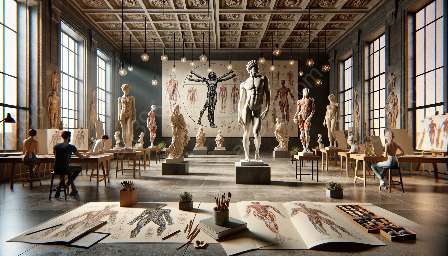Artists have long utilized figure drawing as a means of exploring and expressing themes related to gender and identity. Through the careful study of human anatomy and the use of various figure drawing techniques, artists have been able to convey complex ideas surrounding these topics. This exploration often involves a deep understanding of artistic anatomy and an awareness of how gender and identity shape the portrayal of the human form. By delving into this intersection, artists are able to create compelling and thought-provoking artworks that challenge societal norms and provide commentary on issues of gender and identity.
Understanding Figure Drawing Techniques
Figure drawing involves the representation of the human form through various artistic techniques such as line drawing, gesture drawing, and anatomical studies. Artists seek to capture the proportions, movements, and expressions of the human body, often employing different mediums and styles to convey their intended message. These techniques serve as a foundation for artists to explore the complexities of gender and identity within their work.
Exploring Artistic Anatomy
Artistic anatomy plays a crucial role in the portrayal of gender and identity in figure drawing. Artists delve deeply into the study of anatomical structures, forms, and proportions to create accurate and expressive representations of the human body. This understanding allows them to convey gender-specific traits, physical nuances, and emotional depth in their depictions, thereby contributing to the exploration of identity through figure drawing.
Gender as a Subject of Exploration
Figure drawing provides a platform for artists to delve into the multifaceted aspects of gender. Through their representations of the human figure, artists can challenge traditional gender roles, question societal constructs, and explore the fluidity and diversity of gender identities. Whether through subtle nuances or bold statements, artists use figure drawing to engage with the complexities of gender, offering a lens through which viewers can contemplate and understand this fundamental aspect of human identity.
Identity and Self-Expression
Artists also use figure drawing as a powerful tool for self-expression and the exploration of personal and collective identities. By infusing their own experiences and perspectives into their artwork, artists depict a wide range of emotions, cultural influences, and individual narratives through the human form. This allows for a rich exploration of identity that encompasses aspects of race, ethnicity, sexuality, and other dimensions of human experience.
Social Commentary and Advocacy
Beyond personal expression, figure drawing serves as a medium for social commentary and advocacy on issues related to gender and identity. Artists address societal inequalities, discrimination, and stigmatization through their artistic representations, fostering conversations and promoting awareness. Through the evocative portrayal of the human figure, artists push boundaries, challenge norms, and advocate for greater inclusivity and understanding in society.
Conclusion
Through figure drawing, artists navigate the intricate intersections of gender, identity, figure drawing techniques, and artistic anatomy. The study and portrayal of the human form become a canvas for self-exploration, social critique, and the celebration of diversity. By harnessing the power of art, artists continue to provoke dialogue and contemplation on the multifaceted aspects of gender and identity, contributing to a broader understanding and appreciation of human experiences.

